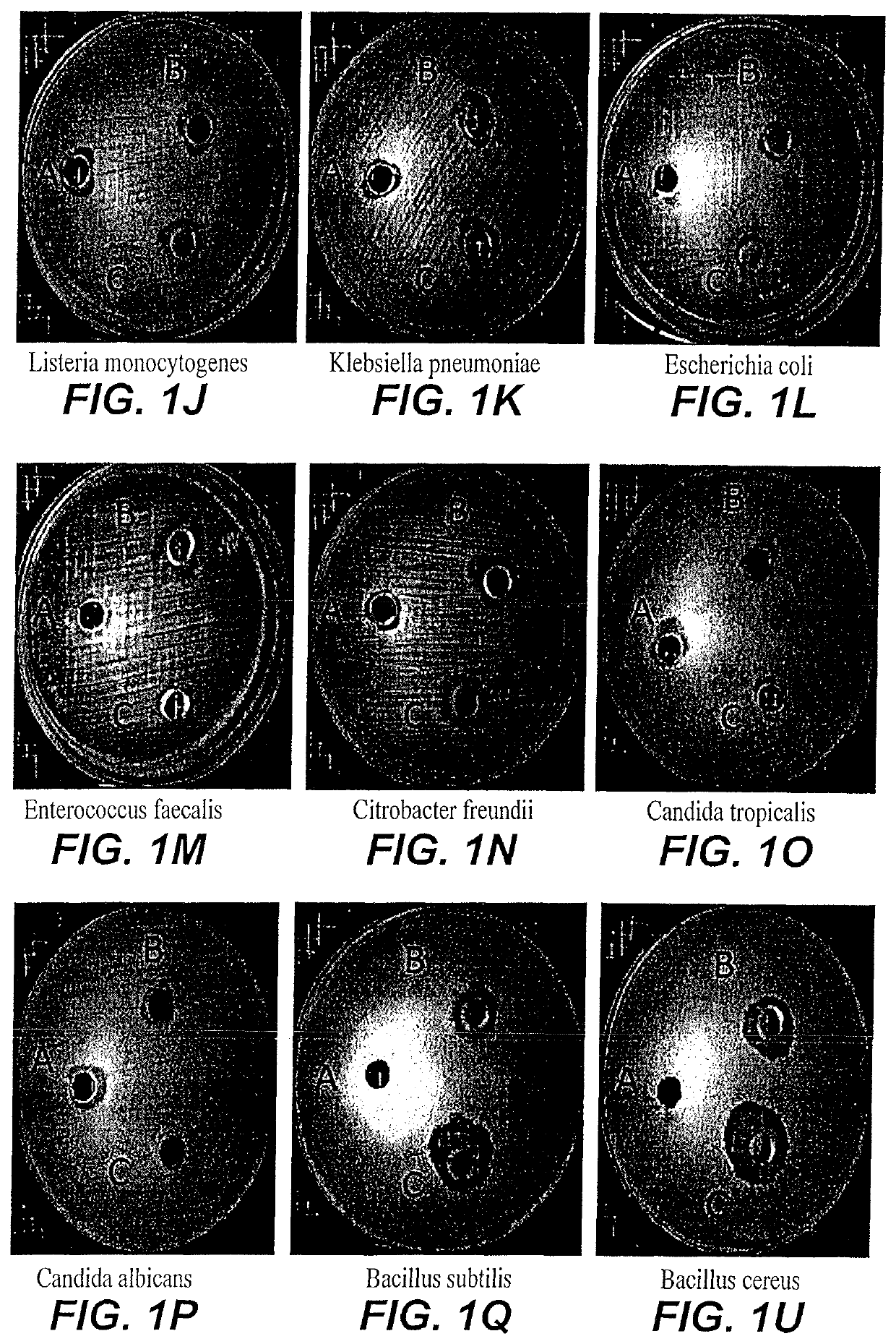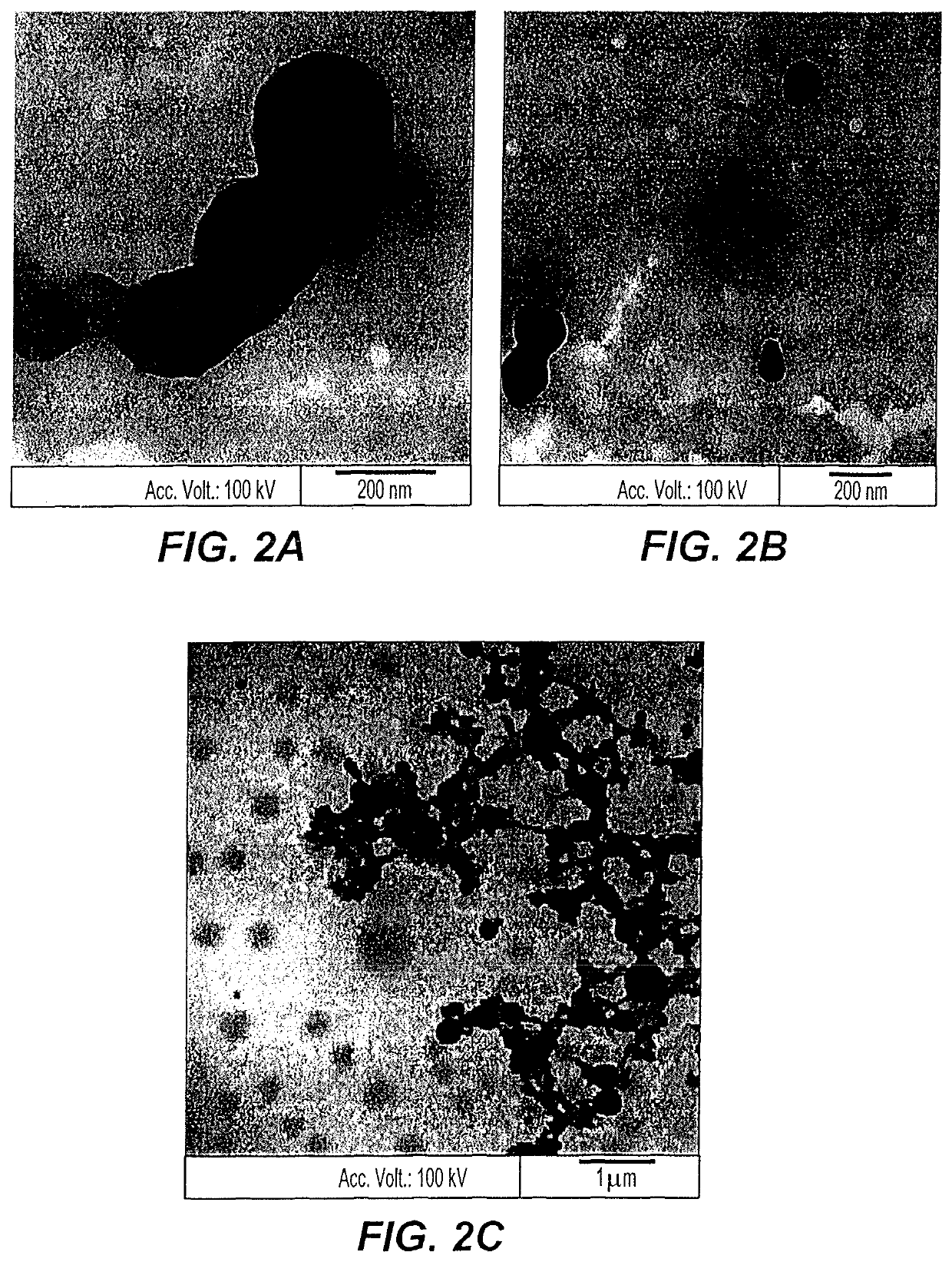Method of synthesizing custard apple peel nanoparticles
a technology of custard apple peel and nanoparticles, which is applied in the field of nanotechnology, can solve the problems of toxic byproducts and expensive methods
- Summary
- Abstract
- Description
- Claims
- Application Information
AI Technical Summary
Benefits of technology
Problems solved by technology
Method used
Image
Examples
example 1
Synthesis and Characterization of Custard Apple Peel Nanoparticles and Custard Apple Peel Extracts
[0043]Custard apple peel extracts were synthesized as follows. Custard apple peels were washed with tap water and then dried in an oven at 50° C. for 24 hours. The external crust (epicarp) was crushed using grinder machine (Mockmill 200 Stone Grain Mill by Wolfgang Mock). The crushed portion was soaked in water (100 mg / ml) for 24 hours at 5° C., producing the custard apple peel extracts.
[0044]Custard apple peel nanoparticles were synthesized as follows. Custard apple peel powder (450 mg) was taken in 50 ml of ethanol under stirrer, then this solution was sprayed into boiling water (40 mL) dropwise with a flow rate of 0.2 mL / min in 5 min under ultrasonic conditions, with an ultrasonic power of 750 W and a frequency of 20 kHz. After sonication for 10 min, the contents were stirred at 200-800 rpm at room temperature for about 20 min. The solution was dried to obtain custard apple peel nano...
example 2
Antimicrobial Activity of Custard Apple Peel Nanoparticles and Custard Apple Peel Extracts
[0048]The agar diffusion method was used to determine the antimicrobial activity of custard apple peel nanoparticles and custard apple peel extracts synthesized according to the method of Example 1 against a variety of microbes. In brief, bacterial strains were grown on Brain Heart Infusion agar (Oxoid CM 1136) for about 24 hours at 37° C. and about 100 μl of 106CFU / ml of each active bacterial strain were spread on the surface of Muller Hinton agar plates (Oxoid CM 0337). About 100 mg / ml of custard apple peel nanoparticles were dissolved in sterilized water and left overnight in the refrigerator. Three holes were bored in each agar plate using a sterile cork borer with a diameter of 6 mm, and a volume (about 50 μl) of the dissolved custard apple peel nanoparticles and the custard apple peel extracts were introduced into individual wells, (hole (C) contained the custard apple peel nanoparticle s...
example 3
Antioxidant Activity of Custard Apple Peel Nanoparticles and Custard Apple Peel Extracts
[0051]The antioxidant activity of custard apple peel nanoparticles and custard apple peel extracts prepared according to Example 1 was measured as follows.
[0052]For each antioxidant test, the performance of Custard Apple Peel Extract was compared to the performance of Custard Apple Peel Nanoparticles. The Custard Apple Peel Extract was dried, and then about 500 mg of the dried Custard Apple Peel Extract and about 500 mg the Custard Apple Peel Nanoparticles were respectively dissolved in about 25 ml methanol. The respective mixtures were left on the shaker for 24 hours, centrifuged, and the supernatant was filtrated and adjusted to 25 ml. The solution was maintained in the refrigerator and used within one week.
[0053]Total content of phenolic compounds was determined by the Folin-Ciocalteu method. A volume of about 2.5 ml of distilled water and about 0.1 ml of a custard apple peel sample (nanoparti...
PUM
| Property | Measurement | Unit |
|---|---|---|
| frequency | aaaaa | aaaaa |
| ultrasonic power | aaaaa | aaaaa |
| average size | aaaaa | aaaaa |
Abstract
Description
Claims
Application Information
 Login to View More
Login to View More - R&D
- Intellectual Property
- Life Sciences
- Materials
- Tech Scout
- Unparalleled Data Quality
- Higher Quality Content
- 60% Fewer Hallucinations
Browse by: Latest US Patents, China's latest patents, Technical Efficacy Thesaurus, Application Domain, Technology Topic, Popular Technical Reports.
© 2025 PatSnap. All rights reserved.Legal|Privacy policy|Modern Slavery Act Transparency Statement|Sitemap|About US| Contact US: help@patsnap.com



